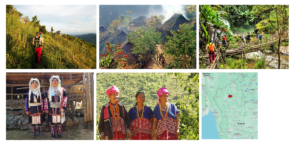When it comes to zoos, my feelings are conflicted. On the one hand, as an animal lover and a vegan, I find it hard to rationalize, snatching creatures out of their natural habitats and putting them in cages for us humans to gawk at. Isn’t that species-ism at its worst? I’m reminded of a scene in Vonnegut’s Slaughterhouse Five, when the protagonist is taken up by aliens and placed in a kind of human zoo. I don’t know about you, but I wouldn’t want to be caged and gawked at by creatures with bigger brains than me. (Which, to be fair, is a good many people.)
On the other hand, the last time I visited the San Diego Zoo, I was struck by the organization’s commitment to animal conservation. Many of the creatures there, for one reason or another, were facing extinction in their home habitats. If the Zoo hadn’t “rescued” them, a great many of the animals would’ve died or even gone the way of the dodo. It made me wonder if my views about zoos might require a bit more nuance.
But what about human zoos, right here on earth?
It’s 1986 and I’m on a hill tribe trek in northern Thailand. As we arrive in our first village, I’m struck by the lovely tribal attire of the residents: red dresses with intricate knitting, headware with interwoven coins, brightly-covered necklaces and shoes that tinkle with the sound of tiny bells. Before I know it, out comes my camera and I’m snapping and gawking away with the rest of the trekkers. Off to one side, a tribal girl of eight fishes around in a bucket of ice and pulls out an icy-cold Coca Cola, which I can purchase for a mere two bucks. The town folk all smile as I take their pictures, then calmly ask, through an interpreter, for a modest photograph fee. A pittance, really.

What am I supposed to think of this? How is this different from an animal zoo, where the local denizens are being similarly exploited for the spectator’s fascination (and amusement)? At least here, I will say, the indigenous inhabitants actually get paid!
That night we stay in a tribal house in a neighboring village. Built on stilts, the abode shifts around a bit as we sit and chat with our hosts, thanks in no small part to the pigs that are rutting around beneath us. In one corner of the modest wooden building is a table set with a delicious meal. In another, a group of tribal men are reclining on cushions, smoking opium.
“Want a puff?” one of them beckons? I decide to abstain. This IS a trek after all; I have to walk 3 hours out of the hills the next day, and who knows how I might feel after an evening of opium smoking?!! As the conversation and the meal continues, I find myself thinking, “What an interesting human moment this is!” It’s as if I’ve been let inside the cage and the “animals” have proven to be people after all, eager to share their culture and their stories, and to learn about ours as well. No money is being exchanged here (at least that I can see). It’s just people, talking with people, making an intimate cross-cultural connection.
It’s been over 30 years now and I still don’t quite know what to make of my hill tribe trek. Clearly these tribal folks have traded their traditional lives for the income generated by tourism. But isn’t that what everyone in the tourism world does – package up their sights and culture for visitor consumption? How is this so different?
When it comes to zoos and tourism, I think we all need to pepper our attitudes with a bit more nuance.
(Political debates always seem to reach a point where one person snaps at the other, “What’s your position, Senator—yes or no? You can’t have it both ways!” But can’t we? Do we really need to see things as black and white, with no grey in between? This is especially true for people, whom we so easily assess, judge and label as “good” and “bad.” But don’t we really mean, “I disapprove of this person’s particular behavior,” not “I dislike this person as a whole”? Humans are complicated. They can be heroes one second, and craven villains the next. Perhaps a bit more nuance is required for our own species, wouldn’t you say?)
